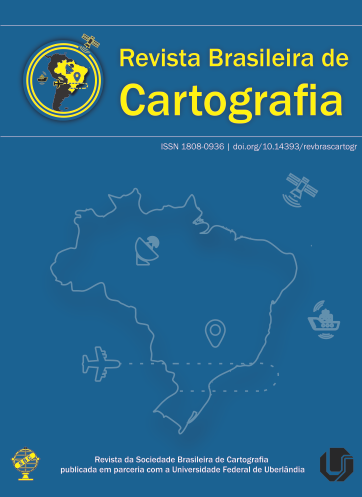A Incerteza no Mapeamento dos Limites Espaciais das Feições Geográficas
Conteúdo do artigo principal
Resumo
Com a avanço das resoluções espaciais e temporais das imagens de satélite, ocorre aumento da demanda por produtos cartográficos com escala maiores. Para a cartografia, o aumento de resolução significa a possibilidade de se detectar os limites dos objetos que se quer mapear com maior precisão. Quando se observa um produto cartográfico vetorial, todas as feições representadas, são regiões que apresentam alguma característica que as diferenciam do “continuum” ao seu redor. Porém, várias das feições com as quais os cartógrafos trabalham no dia a dia, carecem de limites geométricos bem definidos, nítidos. Linhas litorâneas, Biomas em geral, Zonas de Risco, Frente Frias, Zonas de Criminalidade etc., são exemplos de feições que necessitam ser mapeadas, mas devido a suas características, apresentam desafios para serem modeladas geometricamente. Neste trabalho será apresentada uma revisão bibliográfica, apoiada por diversos exercício conceituais, com o objetivo de mostrar como a incerteza posicional dos limites das feições geográficas afeta o processo cartográfico (da coleta à representação), e como uma classificação destes limites e também dos tipos de incertezas associadas, pode ajudar no melhor entendimento e tratamento da informação geoespacial.
Downloads
Detalhes do artigo
Seção

Esta obra está licenciado com uma Licença Creative Commons Attribution 3.0 Unported License.
Autores que publicam nesta revista concordam com os seguintes termos:
- Autores mantém os direitos autorais e concedem à revista o direito de primeira publicação, com o trabalho simultaneamente licenciado sob a Licença Creative Commons Atribuição que permite o compartilhamento do trabalho com reconhecimento da autoria e publicação inicial nesta revista.
- Autores têm autorização para assumir contratos adicionais separadamente, para distribuição não-exclusiva da versão do trabalho publicada nesta revista (ex.: publicar em repositório institucional ou como capítulo de livro), com reconhecimento de autoria e publicação inicial nesta revista.
- Autores têm permissão e são estimulados a publicar e distribuir seu trabalho online (ex.: em repositórios institucionais ou na sua página pessoal) a qualquer ponto antes ou durante o processo editorial, já que isso pode gerar alterações produtivas, bem como aumentar o impacto e a citação do trabalho publicado (veja "O Efeito do Acesso Aberto").





